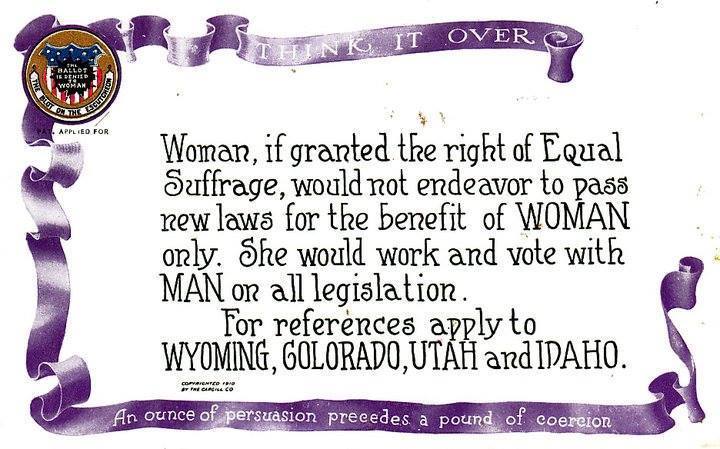
Today in Feminist History is our daily recap of the major milestones and minor advancements that shaped women’s history in the U.S.—from suffrage to Shirley Chisholm and beyond. These posts were written by, and are presented in homage to, our late staff historian and archivist, David Dismore.
December 23, 1912: Another replenishing of the ranks on this eighth day of the suffrage army’s march from the Bronx to New York’s capital of Albany.
The High Command—General Rosalie Jones, Colonel Ida Craft and Surgeon-General Lavinia Dock—now has an equally large number of troops in the enlisted ranks to lead. Private Alice Clark had taken emergency leave, but has now rejoined her comrades. Gladys Coursen enlisted in Poughkeepsie day before yesterday. A woman names Stiles, whose original motivation for marching was to improve her physical fitness, has become so enthused about “The Cause” after prolonged exposure to the pilgrim band’s regulars that she has now begun joining Captain and Chief Orator Jessie Hardy Stubbs on many speaking engagements along the route.
It should be noted that “Commissary Wagon” Driver Alphonse Major has also been along from the start, as well as many “war correspondents” reporting the hike’s events.
Today began with a literal “stump speech” by General Jones in front of Rhinebeck’s—and, some say, the nation’s—oldest hotel. Then off they all went, though showing signs of fatigue from yesterday’s long march. After a mile or so, the Commander-in-Chief was leaning on the arm of Private Clark, and a half-mile farther along, “Doc” Dock called a temporary halt to “feed the horses,” as she calls rubbing her feet with cold cream. But encounters with friendly partisans, and the support given the hikers by these local residents put the spring back in their steps.

All marchers were presented with violets by the owner of Sheak’s Hothouse, then when they passed the Baker Chocolate Works, the whistles were tooted for them until they were all out of hearing range.
The only near-mishap of the day occurred when General Jones began jogging toward a black and white “cat” in a tree. Fortunately, Private Clark had rejoined the march at an opportune time, and as an experienced rural hiker, was able to warn Jones that it wasn’t a cat, so the army avoided a potential chemical warfare attack by making a wide detour around the skunk.
Arrival in Red Hook found the home of Village President Massoneau decorated in suffrage-yellow bunting, put up by his niece for the occasion. Two local women, Catherine Hoffman and Mary Lown, were in a pony carriage ready to escort the marchers through town. The employees of the Hoffman Tobacco Factory were out on the balconies cheering, even though none of the troops smoke or chew tobacco, so there was no chance of a commercial endorsement. The official welcome to Red Hook was made by Margaret Aldrich, State Treasurer of the New York Woman Suffrage Party, who introduced the travelers to the 200 people who had gathered to welcome them.
Finally the troops arrived in Upper Red Hook, ready for a night’s rest, only to find that the hotel was filled. General Jones got out her blanket and was preparing to bivouac on the road when the Hamm family offered its home as a barracks, as well as a place to celebrate Colonel Craft’s birthday, and both invitations were happily accepted. The suffrage army has now advanced 111 miles, though just 9 of them today.





